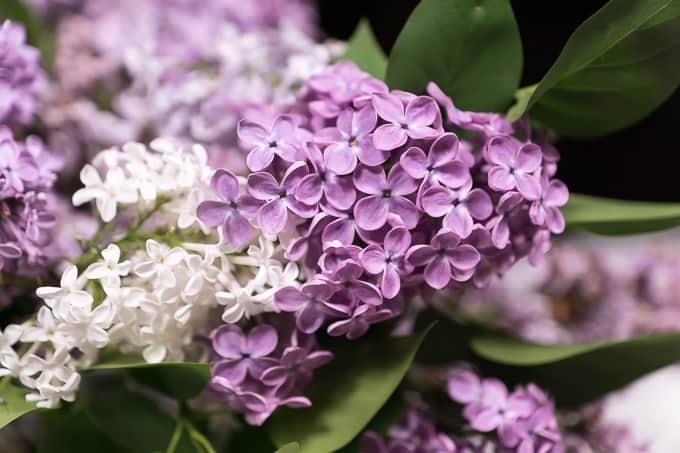
Did you know that lilacs are edible? I didn’t until a week ago. Lilac trees are in full bloom in Schwetzingen, and as I was passing by several large bushes laden with fragrant white and purple blossoms, literally bathing in their scent, all of a sudden I had this notion that they might be edible. I know that elderberry blossoms can be used to make a fragrant and delicious syrup, as it is a common and welcome bubbly drink in Romania during elderberry season (my mom still makes it every spring). So I did some research and found out that lilac blossoms can be used similar to elderberry flowers.
Actually, lilac is supposed to be a medicinal herb that can help lower fever and improve digestion. Its medicinal use has been documented since the middle ages.
Four Easy Ways of Using Lilac Blossoms and Leaves
- The easiest way to consume lilacs is to make tea using either the blossoms or the leaves. You can use both fresh blossoms and leaves. But you can also wilt them to be able to enjoy your cup of lilac tea once its season is over. Below I noted down the quantities I used with fresh blossoms or leaves, along with some tips and tricks.
- Another easy way of preserving and cherishing the intoxicating scent of lilacs is to make lilac blossom syrup. This definitely puts your patience to the test, as the liquid needs to rest for 3-5 days. I will post a recipe as soon as I get to try it out.
- Why not use the lilac flowers as natural aromatherapy when taking a bath? Sprinkle your bath water with two handfuls of lilac blossoms and let the heady, springy, and hopeful lilac fragrance melt your thoughts away.
- Make lilac-infused sugar to add a light lilac flavor to your sweet treats. It's so easy: Mix dry lilac petals (don't wash them) with sugar and leave them to infuse in a mason jar for up to a week; when done, you can either sift the sugar to remove the petals, or you can grind it together with the petals. You can read more about this method at Cinnamon & Coriander.
Harvesting Recommendations
If you want to harvest lilacs for culinary or aromatherapy purposes, here are some things you should pay attention to.
- Choose plants from an area with no or little exposure to car emissions.
- Harvest dry flowers, e.g., not right after a rain shower.
- Harvest in the morning or right after sunset when the flowers and leaves are fresh and filled with water.
- Harvest lilac heads with fresh and newly opened blossoms (not those with wilted, brown blooms).
Lilac Blossom Tea
Lilac blossoms are known to soothe the stomach, for example, improve digestion.
To my surprise, the lilac blossom tea doesn’t have the typical strong lilac fragrance; its scent is slightly bloomy. Once the tea is done, my trick is to sprinkle 2-3 blossoms over the tea so I can enjoy the unique lilac scent with every sip.
The tea tastes mild, “oaty”, and “grassy”, just like a fine herbal infusion.
🍽 Recipe
Lilac Blossom Tea
Ingredients
- 2 tablespoons of lilac blossoms (1 fresh lilac head makes 2-3 cups)
- 250-300 ml boiling water
- Sweetener of your choice optional
Instructions
- Pull 2 tablespoons of lilac blossoms off of the stem.
- Steep lilac blossoms in hot water for 5 minutes.
- Remove the blossoms from the tea.
- Add sweetener if needed.
- Sprinkle 2-3 blossoms over the tea for the typical lilac scent.
Lilac Leaves Tea
You can also use the leaves of lilacs to make tea. The leaves are known to reduce fever.
Lilac leaves tea is bitterish in taste, not as mild as the lilac blossom tea. I like the delicate bitterness, but you may want to sweeten your cup of lilac leaves tea.
🍽 Recipe
Lilac Leaves Tea
Ingredients
- 2-3 lilac leaves
- 250-300 ml boiling water
- Sweetener of your choice optional
Instructions
- Steep lilac leaves in hot water for 5 minutes. The longer you steep them, the more bitter the tea will get.
- Remove the leaves from the tea.
- Add sweetener if needed.

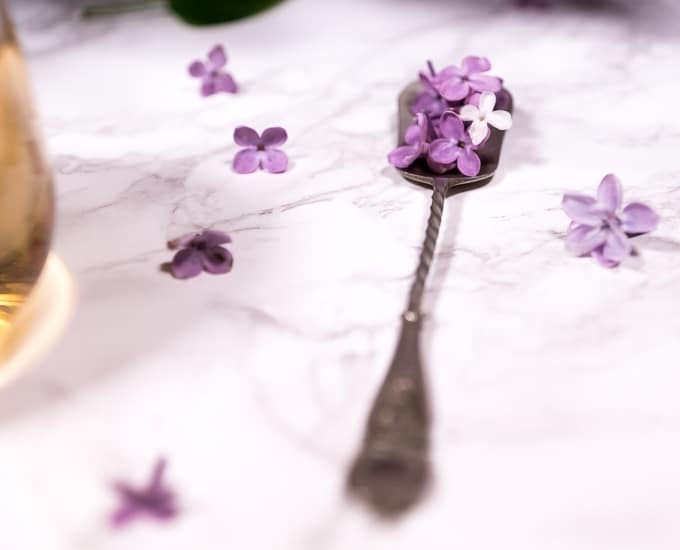
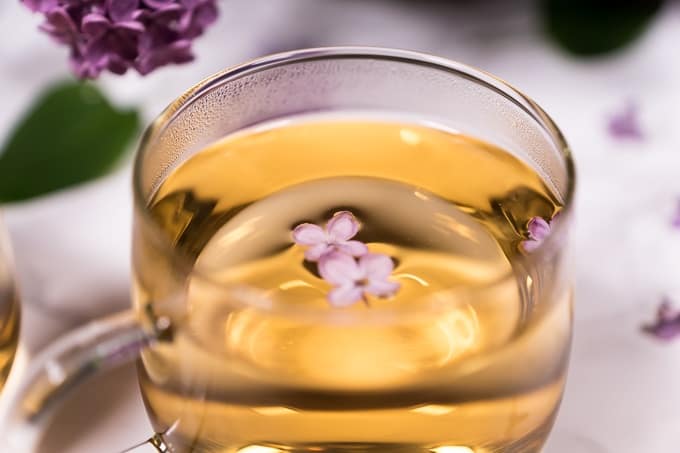

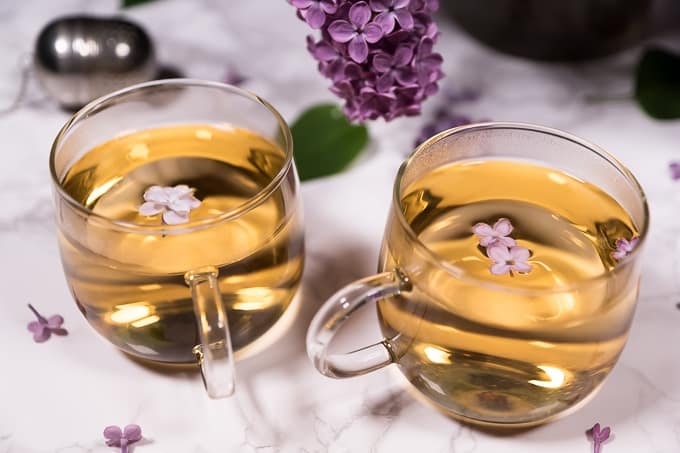
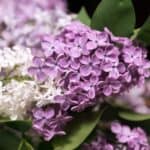
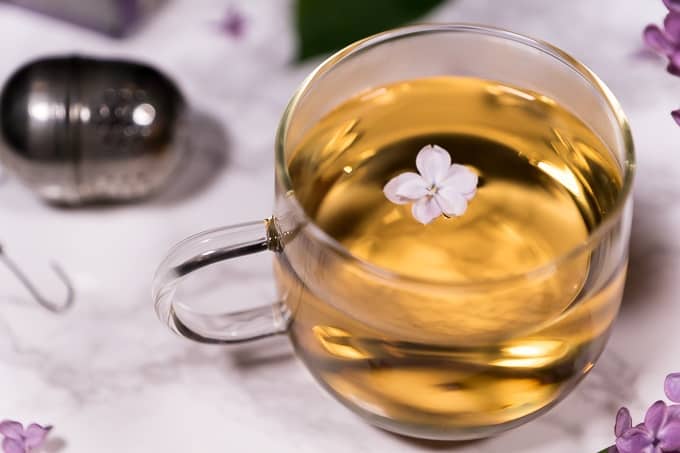
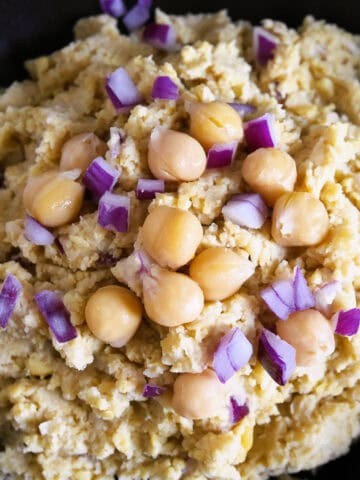
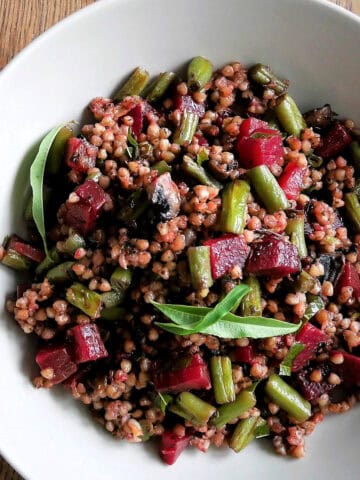

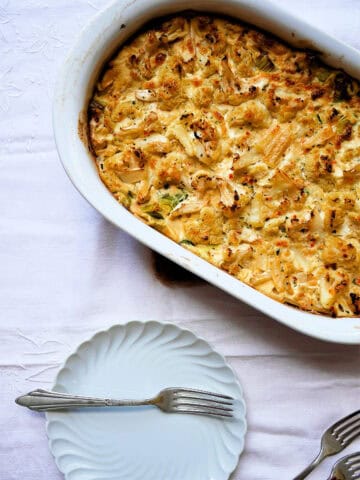
Terri says
Lilacs are a rite of passage into spring for me. I need to try this!
Ramona says
Hi Terri,
The same is true for me. Lilacs, elderflowers, and peonies are the bloomy queens of spring to me.
With joy and love,
Ramona
Julie says
I have dark spots on my face, will the Lilac help remove them?
Ramona says
Hello Julie,
Thanks for your comment. Unfortunately, I'm not a dermatologist or doctor and have no information whatsoever about your request. Really sorry.
Cheers,
Ramona
Harry says
Do you dry out the lilac flowers? What about the leaves?
Looking to try the tea...
Ramona says
I usually use fresh lilac flowers and leaves. You can, though, dry both to preserve them and enjoy a cup of lilac tea off lilac season. Enjoy your tea. 🙂
Cassidy says
no, buy the product faded by Topicals... works wonders
Isabelle says
Thank u for ur informative article! Would u happen to know if the lilac leaves have the same medicinal properties/benefits as the flowers?
Ramona says
Dear Isabelle,
Thanks for your comment, happy you like the article.
I'm not an herbalist or nathuropat, so I don't have profound knowledge on the medicinal benefits. From what I've learned, both lilac blossoms and leaves have been used for similar purposes throughout the centuries. You can read more about the benefits on the following websites, for example:
https://www.thepracticalherbalist.com/herbal-memoirs/lilac-an-edible-and-medicinal-treat/
https://www.healthbenefitstimes.com/common-lilac/
Cassidy says
hi!
did you ever make the syrup?? i don’t see the recipe on here
Ramona says
I haven't gotton to post the recipe just yet. If you want to try out a syrup recipe, you can go with the one from Joy of Plants (my recipe is similar), see links below. I make sure to let the sugar water cool until it is only lukewarm before pouring it over the lilac blossoms. I find that this way the fragrance and taste are more intense. Also, I start taste testing the syrup after 2 days to check if it's tasteful already.
I hope this helps.
https://www.thejoyofplants.co.uk/how-make-perfect-lilac-syrup
http://ourfoodstories.com/2015/06/lilac-syrup.html/
Linda says
I found steeping the lilac leaves made a nice green tea. If one likes a more sweet tea, add some honey. As I had a horrible cold, drinking this version of a green tea really helped me get well. I will be adding some of the lilac flowers too.
Ramona says
Thanks for sharing your experience, Linda. Happy to hear the lilac leaves tea helped soothe your cold.
Carol Lynn Flanagan says
Can you use dried flowers for tea? Can you air dry them? What about drying the leaves as well? Thank you
Ramona says
Hi Carol,
Thanks for your comment. Yes, you can use dried lilac flowers or leaves for tea. When air drying, it should take about 3 days until they are completely dry.
Cheers,
Ramona